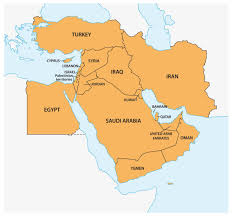Mabrian, the global travel intelligence platform, analysed seats availability data on flights scheduled in international, one-way, direct flights connecting to nine Middle East destinations (Türkiye, Egypt, Jordan, United Arab Emirates – UAE, Saudi Arabia, Qatar, Oman, Kuwait, and Bahrein), that collectively account for 12% of the total global inbound air seats scheduled for the full year 2025. This study is part of a series of Middle East market insights Mabrian will release in the lead-up to Arabian Travel Market 2025, aiming at sparking discussions on key trends shaping the travel & tourism in the region. Ahead of Arabian Travel Market 2025, this edition addressing the connectivity role in tourism development, Mabrian analysed the international air connectivity evolution and forecasts for 9 top Middle East destinations, revealing their role and potential as global aviation hubs and travel destinations, as well as challenges for a sustainable growth for international air connectivity. Mabrian’s analysis of 2025 international air seat availability reveals key shifts in the Middle East’s aviation landscape, underscoring the need for strategic route development, airline partnerships, and network optimisation to strengthen the Middle East’s position as a global aviation hub. Key take outs of this study indicate that the United Arab Emirates and Türkiye maintain their positions as top global connectivity hubs; Saudi Arabia emerges as a fast-growing competitor; Qatar stabilises after sustained expansion; Egypt and Jordan are set to outpace global growth rates, and Oman, Bahrain, and Kuwait face declining inbound connectivity. Saudi Air Connectivity Soars: A +38% Growth in Inbound Seats Since 2019. The United Arab Emirates (ranking in 7th position worldwide with 88.9 million seats available on international flights) and Türkiye (9th position, with 75.6 million seats) are among the top …
Read More »
Breaking News
- Kuwait Airways strengthens partnerships to enhance customer experience
- Ministry of Economy & Tourism participates in “Women’s Economic Dialogue” in China to enhance the global presence of Emirati women
- SalamAir expands global sales reach through dual partnership with Hahnair
- Ciel, the world’s tallest hotel slated to open by Q4 this year
- 385 roomed Safir Sohag to open in Egypt by 2026
- Qatar Tourism concludes ‘Junior Tourism Guidance Programme’
- Kuwait Airways launches Self-Service Check-In System ensuring a seamless check-in experience for our valued passengers
- Big-ticket events set the stage for tourism growth in the Middle East
- Qatar Airways to begin operations at the new terminal One at JFK by 2026, introducing its First U.S. Lounge
- OMRAN CEO among key speakers at WTTC’s landmark 25th Global Summit in Rome
- OMRAN Group launches the second edition of the “GIFTED” Program to Promote the Inclusion of Persons with Disabilities in the Tourism Sector
 Tourism Breaking News
Tourism Breaking News
